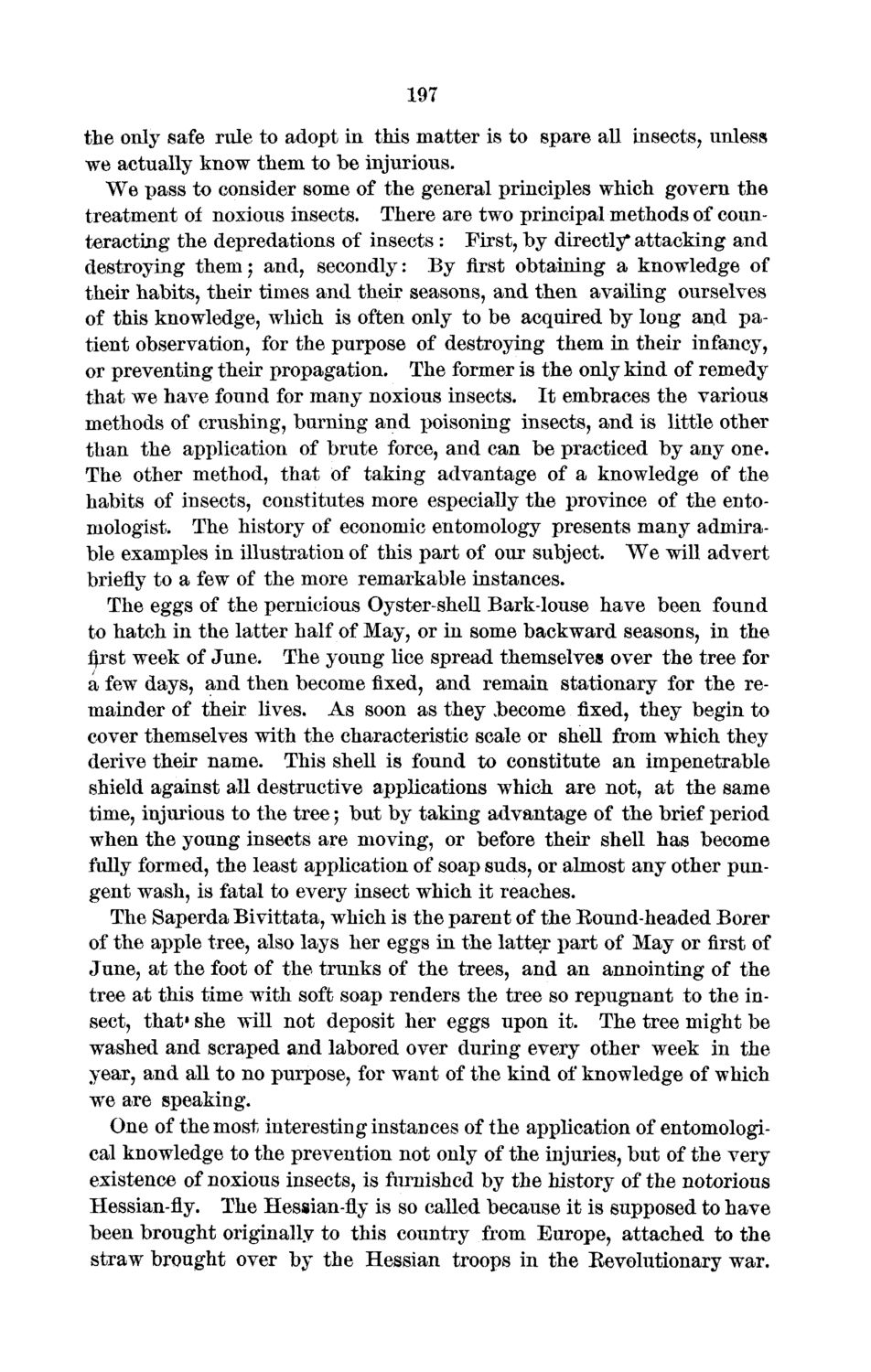| |
| |
Caption: Board of Trustees Minutes - 1872
This is a reduced-resolution page image for fast online browsing.

EXTRACTED TEXT FROM PAGE:
197 the only safe rule to adopt in this matter is to spare all insects, unless we actually know them to be injurious. We pass to consider some of the general principles which govern the treatment of noxious insects. There are two principal methods of counteracting the depredations of insects : First, by directly* attacking and destroying them5 and, secondly: By first obtaining a knowledge of their habits, their times and their seasons, and then availing ourselves of this knowledge, which is often only to be acquired by long and patient observation, for the purpose of destroying them in their infancy, or preventing their propagation. The former is the only kind of remedy that we have found for many noxious insects. It embraces the various methods of crushing, burning and poisoning insects, and is little other than the application of brute force, and can be practiced by any one. The other method, that of taking advantage of a knowledge of the habits of insects, constitutes more especially the province of the entomologist. The history of economic entomology presents many admirable examples in illustration of this part of our subject. We will advert briefly to a few of the more remarkable instances. The eggs of the pernicious Oyster-shell Bark-louse have been found to hatch in the latter half of May, or in some backward seasons, in the ijrst week of June. The young lice spread themselves over the tree for a few days, and then become fixed, and remain stationary for the remainder of their lives. As soon as they .become fixed, they begin to cover themselves with the characteristic scale or shell from which they derive their name. This shell is found to constitute an impenetrable shield against all destructive applications which are not, at the same time, injurious to the tree ; but by taking advantage of the brief period when the young insects are moving, or before their shell has become fully formed, the least application of soap suds, or almost any other pungent wash, is fatal to every insect which it reaches. The Saperda Bivittata, which is the parent of the Bound-headed Borer of the apple tree, also lays her eggs in the latte^r part of May or first of June, at the foot of the trunks of the trees, and an annointing of the tree at this time with soft soap renders the tree so repugnant to the insect, that 1 she will not deposit her eggs upon it. The tree might be washed and scraped and labored over during every other week in the year, and all to no purpose, for want of the kind of knowledge of which we are speaking. One of the most interesting instances of the application of entomological knowledge to the prevention not only of the injuries, but of the very existence of noxious insects, is furnished by the history of the notorious Hessian-fly. The Hessian-fly is so called because it is supposed to have been brought originally to this country from Europe, attached to the straw brought over by the Hessian troops in the Bevolutionary war.
| |